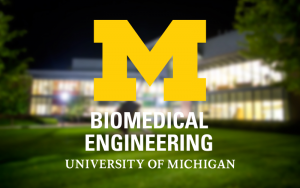Presented By: Biomedical Engineering
PhD Defense: Jiayue Cao
Mapping and Modulating the Stomach-brain Neuroaxis

The stomach and brain interact closely with each other. Their interactions are central to digestive functions and the “gut feeling”. The neural pathways that mediate the stomach-brain interactions include the vagus nerve and the thoracic nerve. Through these nerves, the stomach can relay neural signals to a number of brain regions that span a central gastric network. This gastric network allows the brain to monitor and regulate gastric physiology and allows the stomach to influence emotion and cognition. Impairment of this gastric network may lead to both gastric and neurological disorders, e.g., anxiety, gastroparesis, functional dyspepsia, and obesity. However, the structural constituents and functional roles of the central gastric network remain unclear. In my dissertation research, I leveraged complementary techniques to characterize the central gastric network in rats across a wide range of scales and different gastric states. In animal experiments, I used functional magnetic resonance imaging (fMRI) to map brain activity synchronized with gastric electrical activity and to map brain activations induced by electrical stimulation applied to the cervical vagus or its afferent terminals on the stomach. I also used neurophysiology to characterize gastric neurons in brainstem in response to gastric electrical stimulation. Results from my studies suggest that 1) gastric neurons in the brainstem are selective to the orientation of muscle activity relayed through intramuscular arrays, 2) the central gastric network is intrinsically coupled to gastric slow waves and their amplitude fluctuations primarily via vagal signaling, 3) selective stimulation of the vagus can evoke widespread and fast brain responses and alter functional connectivity within and beyond the central gastric network. My dissertation research contributes to the foundation of mapping and characterizing the central and peripheral mechanisms of gastric interoception and sheds new light on where and how to stimulate the peripheral nerves to modulate stomach-brain interactions.
Date: Wednesday, June 23, 2021
Time: 3:00 PM
Zoom: https://umich.zoom.us/j/2757414653
Chair: Dr. Zhongming Liu
Date: Wednesday, June 23, 2021
Time: 3:00 PM
Zoom: https://umich.zoom.us/j/2757414653
Chair: Dr. Zhongming Liu
Explore Similar Events
-
Loading Similar Events...
